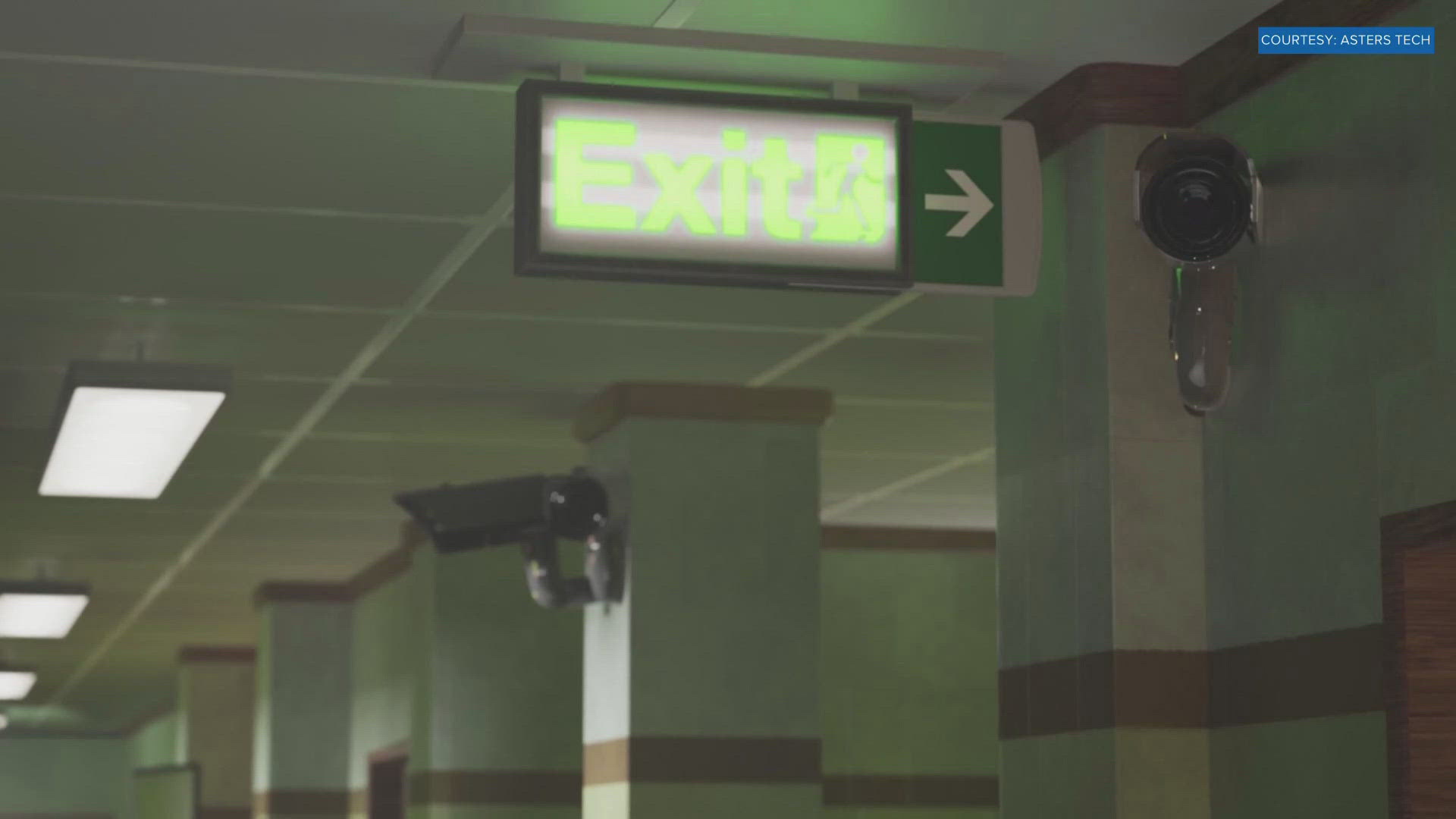KNOXVILLE, Tenn. — A team of researchers from the University of Tennessee and Iowa State University are using artificial intelligence technology to help people make decisions when there is an active shooter.
ASTERS, or Active Shooter Tracking and Evacuation Routing for Survival, is not yet a company. However, the researchers said they are working towards making a product that can help people.
Subhadeep Chakraborty is the co-founder and CEO of ASTERS, as well as an associate professor at UT in the Tickle College of Engineering. He said as a father the company's work is personal.
"We want our systems to be there like a shield," he said. "They don't have to see it. They don't have to carry a reinforced backpack just to protect themselves. It should not damage the sanctity of the learning environment."
It works in three steps, listed below.
- camera or other sensor will track a gun-shaped object using AI. Then a signal is sent to a real person on the campus, whether that's a school official, security guard or law enforcement. Chakrabory said shooters may mingle with the crowd, complicating the technology. It will instead look for possible shapes of guns that may otherwise be hidden.
- Algorithms created by the team determine the best course of action for evacuees. Most of the time, the best practice is to evacuate, but the program finds a route away from the threat. But, if people are near the shooter, the best action is to hide. Aniirudh Ramesh, the other co-founder of ASTERS, said the system can help people quickly know which way to run in an active shooter situation.
- The last step is communicating best practices to people throughout the building. Hallways and rooms have light-up signs that flash green with arrows pointing toward an exit. If the best action is to hide, the lights on the sign flash red. These signs change in real time, based on the motion of the threat.
Some of the AI training to recognize a gun and a shooter was practiced at Iowa State with help from law enforcement in a resident hall. However, the signs have not been tested yet.
"Now we want to do a more elaborate test with the full scope, where our entire optimization routing algorithm is working — the suggestions are going to those dynamic signs and people are reacting to it," Chakraborty said.
Chakraborty and Ramesh said there are some questions that need to be answered before the product can be released. ASTERS also said training, implementation and policy will have to change before people may its cameras and technology.
"It needs a complete rethinking of how these situations are dealt with," Chakraborty said.
Optimistically speaking, ASTERS could have a working product in a year, Chakraborty said. He also said the possibilities for its use can stretch outside schools and beyond active shooter situations.
"This is not only restricted to active shooting. So the response part, you know, it can be anything. It can be, you know, in an airport that a suitcase has been left unattended, and you know, you want to direct people away from that place in an optimal manner," Chakraborty said.
Chakraborty and Ramesh also give credit to the many organizations that have helped them in this research, including the University of Tennessee, Iowa State University, The National Science Foundation, and SENTRY (Department of Homeland Security Center of Excellence led by Northeastern University).

